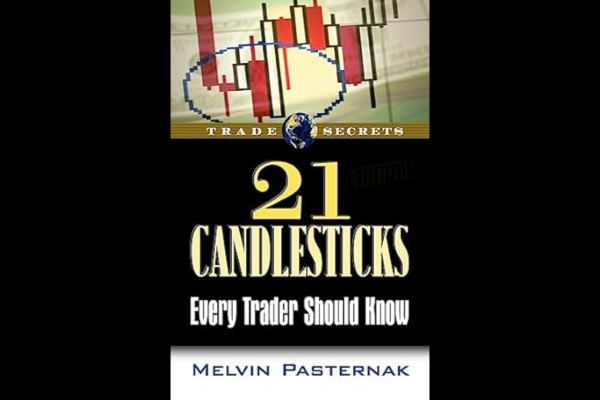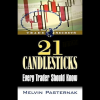21 Candlesticks Every Trader Should Know with Melvin Pasternak
$5.00
File Size: Coming soon!
Delivery Time: 1–12 hours
Media Type: Online Course
21 Candlesticks Every Trader Should Know with Melvin Pasternak
Introduction: Mastering the Art of Candlestick Trading
Trading is an art, and candlestick patterns are the brushstrokes that create the masterpiece. In “21 Candlesticks Every Trader Should Know,” Melvin Pasternak unveils the essential candlestick patterns that every trader must master. This guide provides a comprehensive look at these patterns, helping traders make informed decisions and improve their trading strategies.
What are Candlestick Patterns?
Candlestick patterns are a type of chart used in technical analysis to predict future price movements. Each candlestick represents a specific time period and shows the open, high, low, and close prices.
History of Candlestick Patterns
Originating in Japan, candlestick patterns were first used by rice traders. Today, they are a cornerstone of technical analysis in financial markets worldwide.
Why Learn Candlestick Patterns?
- Visual Representation: Candlestick charts provide a visual representation of price movements.
- Predictive Power: They help traders predict future market movements.
- Versatility: Applicable in various markets, including stocks, forex, and commodities.
Basic Components of a Candlestick
A candlestick is composed of three main parts: the body, the wick (or shadow), and the color.
The Body
- Open and Close: The body represents the opening and closing prices.
- Length of Body: Indicates the strength of the price movement.
The Wick
- High and Low: The upper and lower shadows show the highest and lowest prices during the period.
The Color
- Bullish (Green or White): Indicates the price closed higher than it opened.
- Bearish (Red or Black): Indicates the price closed lower than it opened.
21 Essential Candlestick Patterns
1. Doji
A doji indicates indecision in the market. The open and close prices are nearly identical.
2. Hammer
A hammer appears at the bottom of a downtrend, signaling a potential reversal.
3. Hanging Man
Found at the top of an uptrend, a hanging man suggests a potential reversal.
4. Bullish Engulfing
A small bearish candle followed by a larger bullish candle, indicating a bullish reversal.
5. Bearish Engulfing
A small bullish candle followed by a larger bearish candle, signaling a bearish reversal.
6. Morning Star
A bullish reversal pattern that appears at the bottom of a downtrend.
7. Evening Star
A bearish reversal pattern that appears at the top of an uptrend.
8. Piercing Line
A bullish pattern where a long bearish candle is followed by a bullish candle that closes above the midpoint of the bearish candle.
9. Dark Cloud Cover
A bearish pattern where a long bullish candle is followed by a bearish candle that closes below the midpoint of the bullish candle.
10. Three White Soldiers
Three consecutive long bullish candles, indicating a strong uptrend.
11. Three Black Crows
Three consecutive long bearish candles, signaling a strong downtrend.
12. Spinning Top
A candlestick with a small body and long wicks, indicating indecision.
13. Marubozu
A candlestick with no wicks, indicating strong buying or selling pressure.
14. Tweezer Tops and Bottoms
Two or more candlesticks with matching highs or lows, indicating a potential reversal.
15. Shooting Star
A bearish pattern appearing at the top of an uptrend, indicating a reversal.
16. Inverted Hammer
A bullish pattern appearing at the bottom of a downtrend, suggesting a reversal.
17. Harami
A small candle within the range of a previous larger candle, indicating a potential reversal.
18. Kicker Pattern
A strong reversal pattern indicated by a large gap between two opposite-colored candlesticks.
19. Dragonfly Doji
A bullish pattern with a long lower wick and no upper wick, signaling a potential reversal.
20. Gravestone Doji
A bearish pattern with a long upper wick and no lower wick, indicating a potential reversal.
21. Rising and Falling Three Methods
Continuation patterns consisting of small-bodied candles within the range of a larger trend candle, indicating the trend will continue.
How to Use Candlestick Patterns in Trading
Step-by-Step Guide
- Identify the Trend: Determine the current market trend.
- Spot the Pattern: Look for recognizable candlestick patterns.
- Confirm the Signal: Use additional indicators to confirm the pattern.
- Execute the Trade: Enter the trade based on the confirmed pattern.
Combining Candlestick Patterns with Other Indicators
Using candlestick patterns alongside indicators like moving averages and RSI can improve the accuracy of your trading signals.
Common Mistakes to Avoid
Ignoring the Trend
Always consider the overall trend before acting on a candlestick pattern.
Overcomplicating Analysis
Stick to simple and well-known patterns to avoid confusion.
Failing to Confirm Patterns
Use other technical indicators to confirm candlestick patterns.
Conclusion: Unlocking the Power of Candlestick Patterns with Melvin Pasternak
Mastering these 21 candlestick patterns can significantly enhance your trading strategies. Melvin Pasternak’s insights provide a comprehensive understanding of these patterns, helping traders make more informed decisions.

Commonly Asked Questions:
- Business Model Innovation: Accept the truth of a legitimate business! Our strategy is organising a group buy in which participants share the costs. We use these cash to acquire popular courses from sale pages and make them available to people with limited financial resources. Despite the authors’ worries, our clients love the cost and accessibility we give.
- The Legal Environment: Yes or No The legality of our activity is ambiguous. While we don’t have specific permission from the course authors to resell the material, there is a technicality at work. The author did not specify any limits on resale when purchasing the course. This legal intricacy is both an opportunity for us and a boon for individuals looking for low-cost access.
- Quality Control: Uncovering the Truth
Getting to the heart of the issue – quality. Purchasing the course straight from the sale page guarantees that all documents and resources are the same as those obtained through traditional channels.
However, we distinguish ourselves by going beyond personal research and resale. It is crucial to note that we are not the official course providers, which means that the following premium services are not included in our package:
- There are no scheduled coaching calls or sessions with the author.
- Access to the author’s private Facebook group or web portal is not permitted.
- No access to the author’s private membership forum.
- There is no direct email support available from the author or their team.
We operate independently, with the goal of bridging the pricing gap without the extra services provided by official course channels. Your comprehension of our distinct approach is much appreciated.
Be the first to review “21 Candlesticks Every Trader Should Know with Melvin Pasternak” Cancel reply
You must be logged in to post a review.
Related products
Forex Trading
Forex Trading
Forex Trading
Forex Trading
Forex Trading
Forex Trading
Forex Trading






















Reviews
There are no reviews yet.